I added 2 tabBar items from storyboard and one UITabBarItem - Menu programmatically. I am successfully able to open the controllers corresponding to tabBarItems which I created using storyboard. However, when I click on "Menu" a blank black screen appears,
@objc public class MainScreenTabsController : UITabBarController {
public override func viewDidLoad() {
super.viewDidLoad()
let tabController = MyViewController()
let tabBarItem = UITabBarItem(title: "Menu", image: UIImage(named: "more-options.png"), selectedImage: UIImage(named: "more-options"))
tabController.tabBarItem = tabBarItem
var array = self.viewControllers
array?.append(tabController)
self.viewControllers = array
}
public func tabBarController(_ tabBarController: UITabBarController, shouldSelect viewController: UIViewController) -> Bool {
return true;
}
public override func viewWillAppear(_ animated: Bool) {
super.viewWillAppear(animated)
}
}
I followed couple of tutorials for adding tab bar item but all of them had the code I wrote. Am I missing out something very basic?

EDIT:
Class for Menu Controller
@objc public class MyViewController:UIViewController {
public override func viewDidLoad() {
super.viewDidLoad()
}
public override func viewWillAppear(_ animated: Bool) {
super.viewWillAppear(animated)
}
}